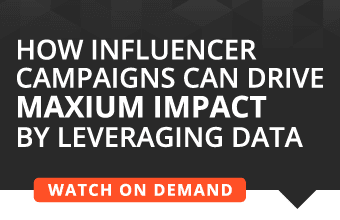2021 was a year of accelerated digital transformation, where we saw influencer marketing continue to explode and reach a market value of $13.8 billion—more than doubling in size from 2019. With the market only expected to grow, it’s critical for brands and influencers to understand how its growth, along with the trends we saw in 2021, will inevitably impact the future of the influencer marketing industry.
Here are the top five influencer marketing trends we will see in 2022:
1. There will be an increase of brand ambassadors over one time deals
In 2022, brand ambassadorship will take over one-time influencer arrangements, as brands seek to implement long-term relationships with their influencers.
Over the last few years, it has become clear that influencers who promote fewer brands appear more authentic than those who advertise with multiple different brands on a consistent basis. Conversely, brands have found it challenging to tell their stories in just one influencer post, resulting in the rise in popularity of brand ambassadors. When audiences on Instagram have multiple touch points with branded content, the content becomes familiar and recognizable, and as a result, much more authentic.
We’ve seen this in the U.S. with influencers Charli and Dixie D’Amelio’s partnership with Hollister, which lead to the launch of the sisters’ own Hollister line “Social Tourist,” and this trend is expected to increase in popularity.
2. Influencers will have more opportunities to monetize their audiences and will continue to blur the traditional lines of influencing
Historically, influencers have found their fame across social media platforms and remained there. What we’ve seen recently is influencers blurring the lines of traditional influence and expanding to other platforms, such as books, reality TV shows etc., with more opportunities to monetize their audiences. Whilst collaborating with brands still accounts for a significant portion of an influencers’ income, other sources of income will continue to take up a larger share.
A recent survey led by HypeAuditor highlighted that a career as an influencer may not be as lucrative as it may seem. On average, influencers earn $2,970 per month from their Instagram account, while micro-influencers (between 1,000-10,000 followers) earn on average $1,420 per month and influencers with more than 1 million followers average $15,536 per month. As a result, only 4% of respondents live on income from an account. The recent outage on the Facebook and Instagram platforms, which stopped many influencers from posting, also illustrates the urgent need for influencers to diversify their income streams to avoid being negatively impacted in case a similar incident occurs again in the future.
3. New categories of influencers will continue to emerge, while standard categories become much more fluid
Look back to 2015, and social media influencers could be segregated into a handful of categories. Now, we’re seeing new categories constantly emerging, and influencers that choose to break the mold and influence across multiple categories. In 2021, we have seen the rise of influencers and ‘fintok’, as well as petfluencers, skinfluencers, and granfluencers, with more expected to come.
“Finfluencers” in particular have gained traction in the U.S., stepping in where traditional financial institutions or more established enterprises have historically made this information challenging to navigate, especially for millennial and Gen Z populations. For example, Austin Hankwitz, a finance and investing influencer with over 525K followers on TikTok, has seen success in the last year, being hired by financial advisory company Betterment.
4. Virtual influencers are here to stay
We first saw virtual influencers, a digital character created online and given a personality on social media, first appear a couple of years ago, but next year we’ll see them solidify their place in the world of social influence, securing more brand deals than ever before. This year, we saw Superplastic raise $20M to expand its cartoon influencer universe, and Rozy, the South Korean virtual influencer, earn around $1M in sponsorships. In addition, the recent announcement by Facebook around metaverse is inevitably going to affect the future of virtual influencers.
5. There will be a rise of social commerce
While social commerce was previously focused on ads or promotions, platforms are beginning to provide new and innovative selling solutions that focus on making the journey easier for buyers. Moving into 2022, brands should reevaluate the purchasing paths they offer and consider taking advantage of social selling opportunities through Instagram posts, Reels, Stories, and more.
Instagram has recently launched a new series of live shopping events as the Holiday season approaches, with weekly interactive livestreams and broadcasts – including the #BuyBlack Live Shopping series taking place every Friday in November, to discover brands from talented Black creators, and a weekly lineup of Guest Edit collections from superstars like plus-size model Paloma Elsesser. Brands need to recognize the power of social selling as a new and important pathway to consumers, and should also remember that the power of influence is expanding everywhere and is not simply confined to social media platforms.
There’s no doubt that the marketing opportunities for influencers will grow indefinitely this upcoming year. With the abundant changes in influencer marketing seen in 2021, we can expect to see influencers adapt to the fast-paced changes and flourish with the times as the digital market expands. As social media expands, the digital influencer world will keep up with it in 2022.








